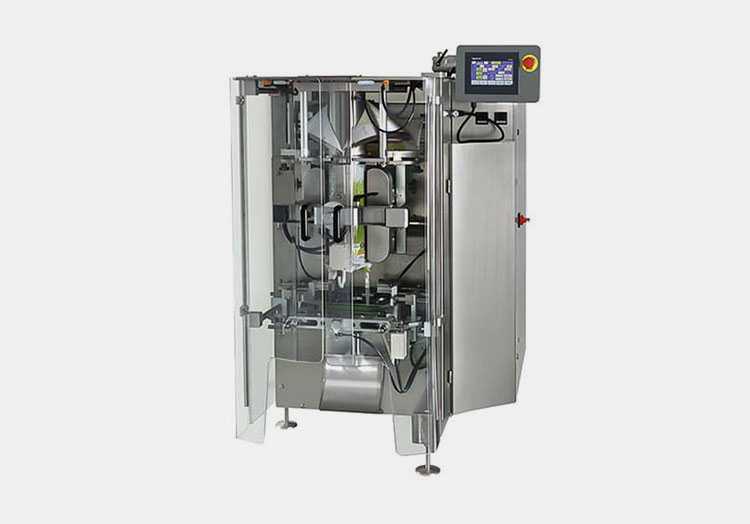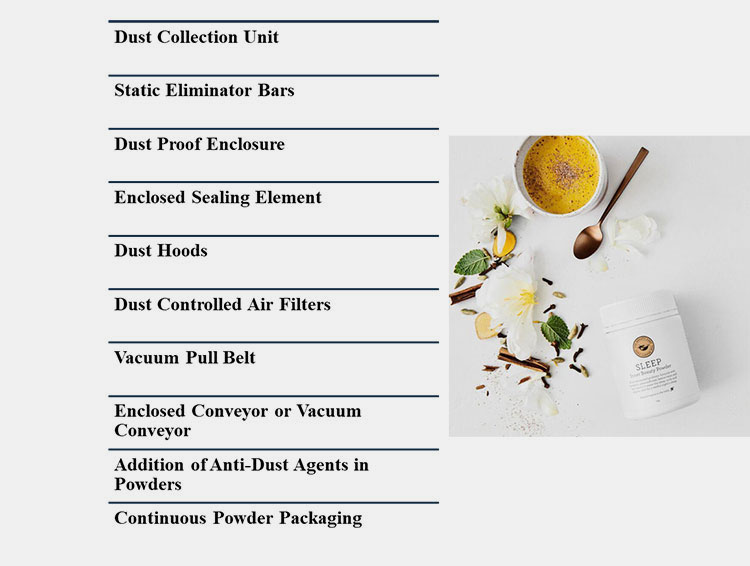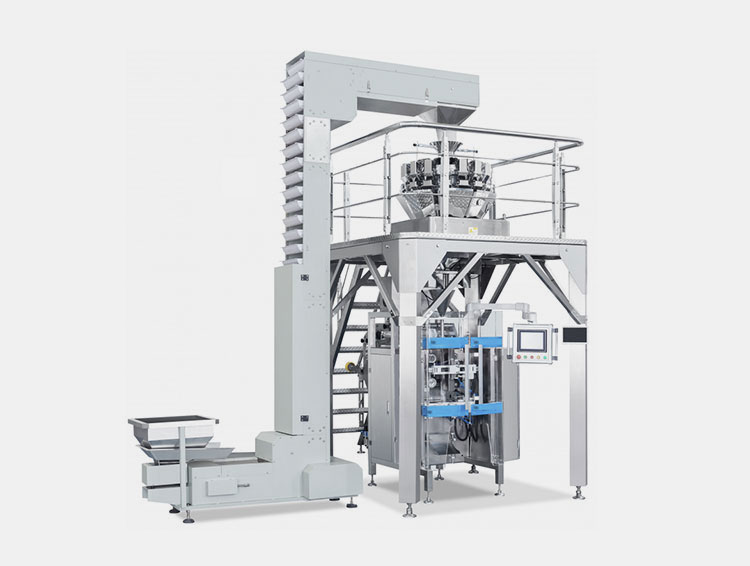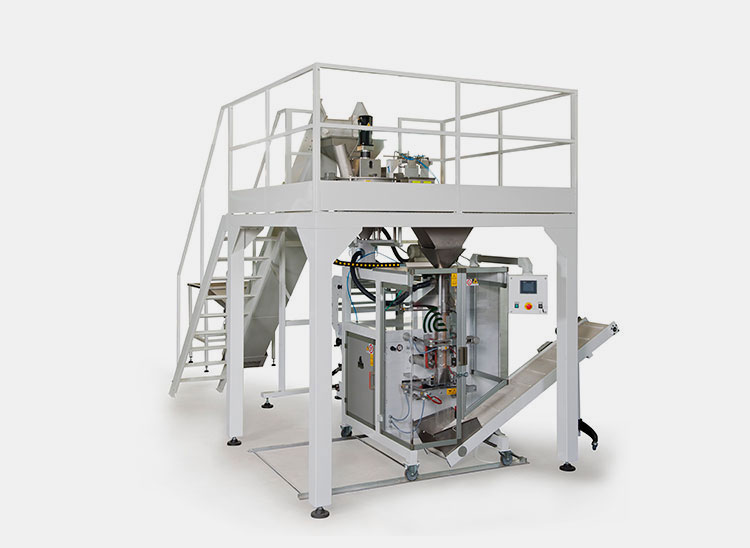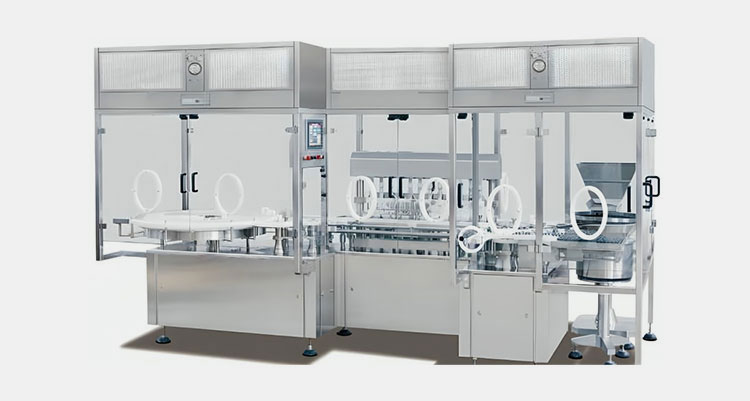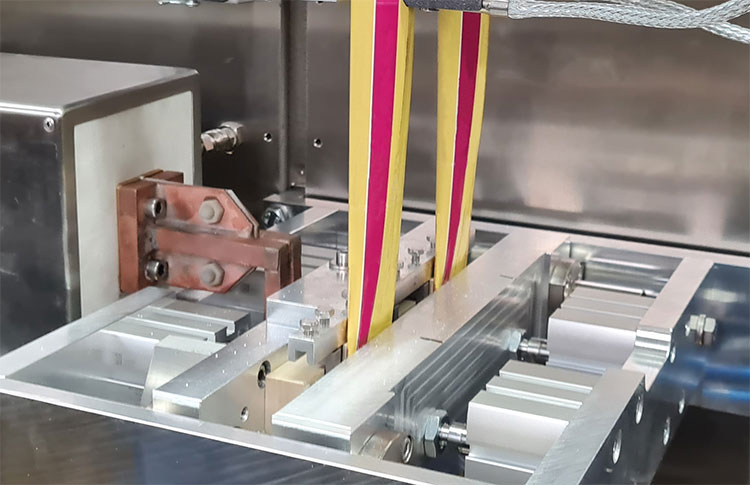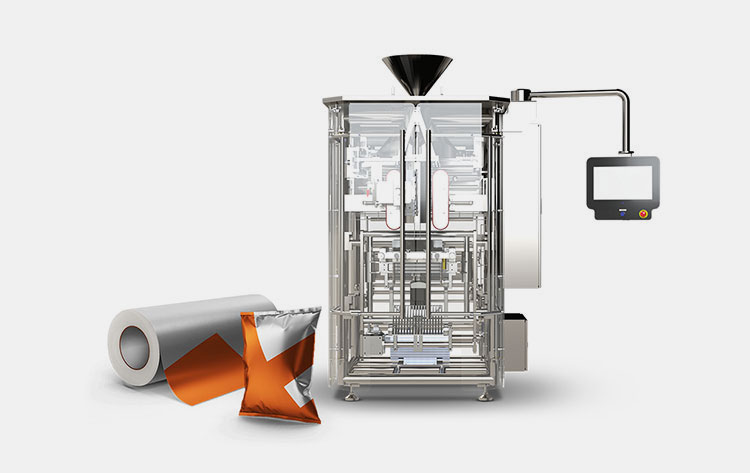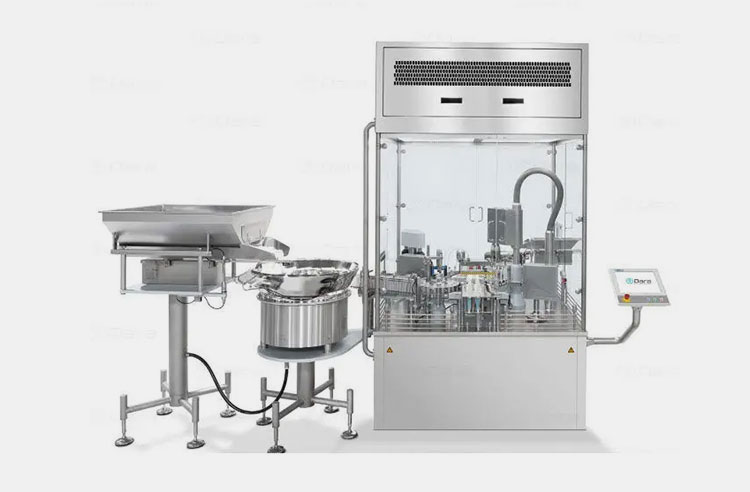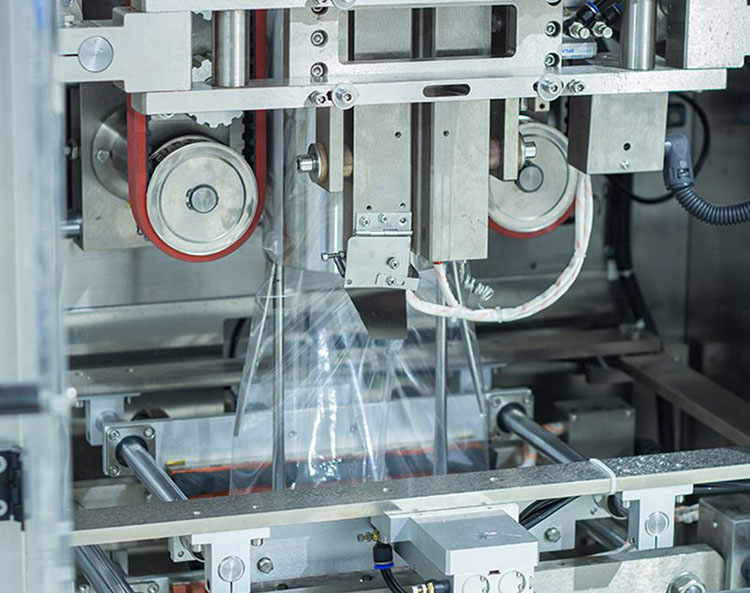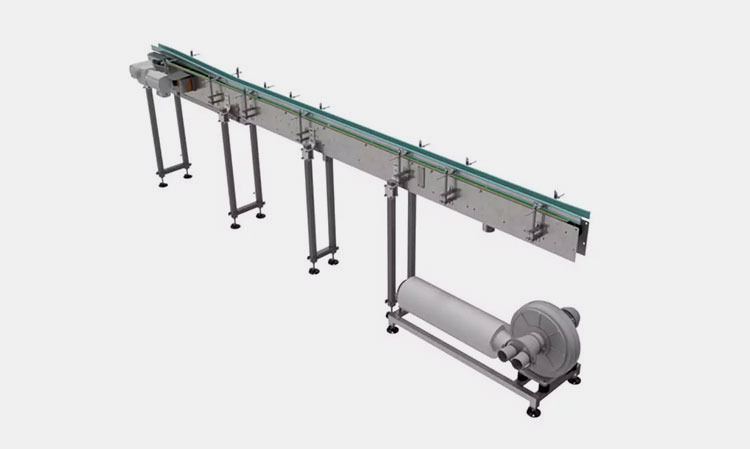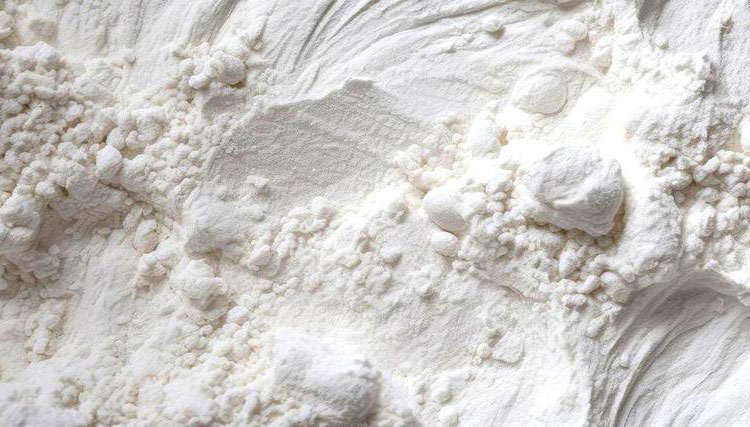10 Ways to Combat Dust In Your Powder Packaging Process
Are you tired of dust generation in your facility? Does dust in your product affect the health of the operator? Does this dust impact the powder packaging integrity?
Powder Packaging- Picture Courtesy: GBU
Consider installing dust-combating devices.
Different kinds of powders like flour, ground spices, curry powders, coffee, and dried snacks generate a lot of dust that influences powder packaging quality and comprises the health safety of the operator.
It can also cause cross-contamination of the powders. How can you combat dust and save your workplace and the operators?
Here is a list of 10 different ways to combat dust in your powder packaging process.
10 Ways to Combat Dust In Your Powder Packaging Process
1.Dust Collection Unit
Dust Collection Unit- Picture Courtesy:kenhighpack.com
Different types of chemicals and other powder formulations are processed in the pharmaceutical and food industries that generate powder dust when they are packed in bottles or bags.
This dust flies in the air and is inhaled by the operators, causing serious lung problems and respiratory diseases. Moreover, dust results in a dirty, unclean, and unsafe workplace, causing contamination of the powder products. Therefore, a dust collection device is fitted inside the powder packing machines. This unwanted dust particles are collected inside the dust collection unit.
The dust collection unit is a powerful and handy device that is used to remove dust and other foreign particles from the air by passing the latter filters. It catches dust inside its perforations. It releases pure air after filtering powder dust and other debris. Dust collection unit is a filtration that purifies air and offers a clean and safe work atmosphere.
2.Static Eliminator Bars
Static Eliminator Bars- Picture Courtesy: Uni-Tech
During flexible packaging, the packaging film is unraveled and passed to the forming, filling, and sealing station.
This film generates static charges. The dust or other debris is attracted by the static charges and adheres to the interior of the packaging film. This leads to accumulation of the dust inside the packaging seals which negatively compromises the quality of the packaging.
The dust can cause contamination of food and pharmaceutical powders.
A static eliminator bar comes with a powder packaging machine that prevents the generator of static charges and avoids dust stickiness to the packaging film.
It is another device used routinely in the industrial setting and works by neutralizing the static charges This can prevent static discharge before its buildup thus reducing the stickiness of powders on the surfaces of products and machines. These static eliminator bars act as a dust repulsion device and ensure smooth powder packaging.
3.Dust Proof Enclosure
Dust Proof Enclosure- Picture Courtesy: imalifesh.com
The dust in the working atmosphere of your production can be because of the open powder packaging systems. Powder packaging machines have separate and full enclosures for housing electric and pneumatic components.
These components must be protected against the access of dust for their accurate functioning and to decrease production delay.
These enclosures fully surround the machine and have holes by which operators interact with the system. This ensures contamination-free and aseptic processing of sterile powders.
When buying a powder packaging machine that will be operated in a dusty environment, always inspect its IP Rating. An IP Rating stands for Ingress Protection. An IP rating of the equipment shows how much it is dust and water-resistant meaning to what extent the machine prevents the entry of water and dust.
For example, a 50 or higher IP rating indicates good dust protection. If you need a dust-proof enclosure then go for equipment with a 60 or higher IP rating.
4.Enclosed Sealing Element
Enclosed Sealing Element- Picture Courtesy: ims-engineering.de
In most cases, the powder packaging machine features enclosed sealing elements. Equipment running in the dusty production or packaging of dusty products must have enclosed moving parts like sealing jaws. If the sealing jaws are not enclosed, they get dirty which impacts the seal's integrity and quality.
The enclosed sealing elements or jaws in these machines are resistant to the entry and sticking of airborne dusty products.
These machines have compact enclosures that protect sealing jaws against the ingress of powder dust and ensure smooth packaging and sealing operations.
5.Dust Hoods
Dust Hoods- Picture Courtesy: Business Wire
A powder packaging machine is equipped with dust hood devices that protect the powders against dust formation. Usually, dust hoods are enclosed components, present over the powder filling stations and it catches any airborne dust particles.
It is an essential dust combating unit present in different powder packaging machines that sucks and eliminates dust particles when the powders are loaded from the filling stations into the bottles or bags.
6.Dust Controlled Air Filters
Dust Controlled Air Filters- Picture Courtesy: Medical Expo
For hygienically processing powders, powder packaging must have dust-controlled air filters. This device combats the powder dust by filtering the air.
These air filters impede the entry of dust particles inside the machine. These dust-controlled air filters ensure the health and safety of the workforce and prevent electric and fire hazards. These devices have tiny holes in which dust particles get struck while filtering the air.
With dust-controlled air filters, the powder packaging machine is capable of meeting good manufacturing practices standards. By filtering the air of dust, these devices keep the workplace free of dust and other foreign objects. They preserve the quality of the air.
7.Vacuum Pull Belt
Vacuum Pull Belt-Picture Courtesy: Voss Belting & Specialty Co.
Vertical form, fill, and seal machine is designed with typical friction pull belts. These pull belts are essential in moving packaging film through different packaging stations like forming tubes, filling nozzles, and sealing jaws using frictional force.
However, if the working environment is dusty, the particles will adhere to the film and frictional pull belts. This reduces the productivity of the environment and causes the production delay.
In contrast with frictional pull belts, vacuum pull belts operate with the help of vacuum instead of friction. This vacuum suction capably eliminates the dust particles piling over the pull belts.
The limitation of these belts is that they are more costly, however, with care, the vacuum pull belts work longer and reduce the chances of untimely machine turnoff.
8.Enclosed Conveyor or Vacuum Conveyor
Vacuum Conveyor- Picture Courtesy: H.F. Meyer Maschinenbau
Open conveyor systems also increase the rates of dust generation and upsurge the risk of workplace accidents. So, to overcome conveyor-related dust issues, it is imperative to install conveying systems like vacuum conveyors or enclosed screw conveyors that decreases the chances of dust generation.
This enclosed conveyor or vacuum system works by creating a vacuum inside the vacuum tubing and minimizing dust generation.
The vacuum is formed before product loading and released while the product is discharged from the other end. Besides the prevention of dust generation, these conveyors gently and delicately move the powders. These conveyors easily transport huge quantities of powders and maintain the clean air inside the productions.
9.Addition of Anti-Dust Agents in Powders
Addition of Anti-Dust Agents in Powders
The dust production can be minimized in the packaging lines by modifying the formulations. Add the dust suppression agents inside the powders if applicable. These additives are necessary for reducing the chances of powders to become airborne. If you are adding anti-dust agents to the powders, ensure that they do not affect the quality and structural integrity of the powders.
10.Continuous Powder Packaging
Continuous Powder Packaging- Picture Courtesy: Lenis machines Inc.
There are two types of powder packaging machines when categorized based on motion type. These are continuous-motion powder packaging machines and intermittent powder packaging machines.
In continuous-motion powder packaging machines, the packaging film is always in motion, whereas in the intermittent powder packaging machine, the motion of the film stops in cycle while the bag is sealed.
This consistent motion of the film in the continuous motion powder packaging machine creates a regular airflow that forces the powders inside the packaging, where they belong. This is not the case in the intermittent motion packaging machine, the dust particles stick with films, causing problems down the line.
Although continuous powder packaging machines are costly, they decrease the problems later on and compensate for its cost by avoiding dust problems and accidents.
Conclusion
Hygienically processing the materials is important for fulfilling the guidelines imposed by the industrial regulatory authorities. Dusty production lines cause health problems in the operators, affect the quality of the products, and negatively influence the reputation of the manufacturer. Thus, it is a must to combat dust in the powder packaging processes to avoid all above-mentioned problems. Now, it is time to conclude the blog post “10 Ways to Combat Dust in Powder Packaging Process”. For queries or purchases, please contact us now.
Don't forget to share this post!
CONTACT US
Tell us your raw material and project budget to get quotations within 24 hours.
WhatsApp Us: +86 181 7101 8586
The Buyer's Guide
